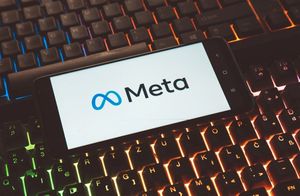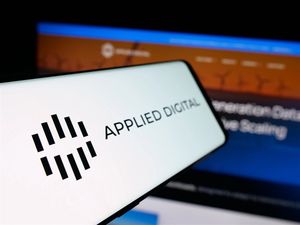Did you know that six in every ten U.S teachers working in public schools have used AI tools in the past school year?
According to the New York Post, a survey of more than 2000 teachers nationwide revealed this astounding data. Those teachers who had been using AI tools also disclosed that they have saved up to six hours per week, thanks to AI.
Whether we like it or not, it is time to admit that AI can become the ultimate teacher's assistant, one that will never sleep, never get tired, and learn faster than any human can keep up with.
From personalized learning platforms to automated grading and lesson planning, AI has the capacity to reshape the process and the pace of modern classrooms. But, teachers need not worry; AI is not here to replace your expertise. AI is here to enhance it.
Understanding what AI can and cannot do for education is now essential. The future can only be a partnership between machine intelligence and human instincts, and those teachers who can perfect the balance between the two will be best prepared to lead their students into a smarter and more adaptive world.
The Changing Role of Teachers
Believe it or not, AI can make a teacher's role more meaningful. In the past, educators had to spend countless hours on menial administrative tasks, grading, and lesson planning.
However, with the arrival of AI tools like ChatGPT, Google's Socratic, and even platforms like Edmodo, teachers can now offload repetitive work and instead invest that time in tasks that truly matter, such as connecting well with the students.
This can enable the teacher's role to evolve from being a knowledge dispenser to a mentor who can guide students in interpreting, questioning, and applying information.
Instead of memorizing knowledge, their focus can shift to developing critical thinking, emotional intelligence, and creative problem-solving skills in their students. While AI can't replicate a teacher's empathy, understanding, and inspiration, it can certainly help them amplify their skills.
Smarter Assessment and Instant Feedback
For years, assessment has been one of the most time-consuming parts of teaching. Enter AI to change the game entirely; it can make assessment faster, fairer, and more insightful. The AI-powered grading tools that are available now can scan essays, quizzes, and assignments with remarkable speed, all the while maintaining accuracy.
Whether teachers are using Gradescope or Turnitin, or even a sophisticated AI detector to identify texts that sound machine-generated or plagiarized, either can help them uphold academic integrity while saving time.
These systems can also analyze patterns in students’ writing and even pinpoint areas that need improvement. For teachers, this means instant insights without having to spend hours on manual review.
For students, this can create a continuous feedback loop, helping them learn from their own mistakes quickly and grow more confident in their own abilities. AI can transform assessment and make it a more dynamic and transparent process.
So even in this era when students have tools that can generate content for anything from daily homework to thesis papers, teachers can uphold integrity with the right tools.
Personalized Learning Made Practical
Every teacher knows that no two students learn at the same pace or in the same way. But, customizing lessons according to each learner has always been logistically impossible. Not anymore, though, thanks to AI.
With adaptive platforms like DreamBox, Carnegie Learning, and Squirrel AI, you can monitor a student's progress in real time and adjust the content to their needs.
This will enable a struggling student to receive extra support instantly, while a fast learner can get advanced material, without having to wait got the rest of their class to catch up. Teachers can use the data to identify who needs more intervention and the best way to deliver it.
This takes away the guesswork from education, enabling teachers to make informed decisions based on accurate learning analytics, something that once would have taken weeks of testing and evaluation.
Enhanced Accessibility with AI
For students with disabilities, AI has opened an entirely new level of accessibility. Tools like Microsoft’s Immersive Reader, speech-to-text software, and real-time captioning in platforms like Google Meet or Zoom are helping bridge gaps in communication and comprehension.
A student with dyslexia can now have text read aloud at a comfortable pace. Those with hearing impairments can follow along through auto-generated captions. Even language barriers are becoming less of an issue with instant translation tools.
When teachers incorporate these technologies into their classrooms, they foster inclusivity and ensure that every learner, regardless of their challenge, has an equal chance to thrive. They can also enable online learning, making education more accessible.
This is where technology and compassion can come together harmoniously.
Data Ethics and Privacy in the Classroom
While AI opens new doors, it also raises serious ethical and privacy concerns that teachers must understand. Student data is sensitive, and AI systems thrive on data collection.
When educators use digital platforms, they’re often sharing metrics on student behavior, performance, and even emotional responses. It’s crucial for teachers to know which platforms comply with data protection laws like FERPA or GDPR and how to safeguard student information.
Transparency with parents and students about how data is collected and used is essential. The goal is to make AI a responsible assistant. Teachers who stay informed about digital ethics can confidently harness AI without crossing boundaries.
Supporting Teachers with Lesson Planning
One of AI’s most practical benefits for educators lies in lesson planning. AI-powered tools can analyze curriculum standards, recommend resources, and even draft outlines tailored to a teacher’s grade level and subject.
Tools like ChatGPT or MagicSchool.ai can generate prompts, discussion questions, or quizzes in seconds. This doesn’t replace the creativity teachers bring to their classrooms.
Instead of spending hours searching for materials, educators can refine AI suggestions to match their teaching style with the unique dynamics of their students. This transforms lesson design from a tedious process into a collaborative one, enabling human expertise and machine efficiency to work hand in hand.
AI’s Role in Developing Critical Thinking
There’s a misconception that AI makes students lazier. In truth, when used correctly, it does the opposite. AI can be leveraged to challenge students’ reasoning skills.
For example, teachers can encourage learners to use AI tools to research topics, then critically evaluate the accuracy or bias in the responses. Learning how to question, verify, and analyze is invaluable now.
By turning AI into a discussion partner rather than a shortcut, teachers can foster intellectual curiosity and skepticism. Students learn not to accept information at face value but to think deeply about its source, reliability, and context.
Collaboration Between Humans and Machines
Education has always been a collaborative process, but AI is introducing a new partner into the mix. Group projects can now integrate AI tools for brainstorming, research, and presentation creation.
For instance, students can use AI to generate visual concepts or organize data, while teachers guide them on how to interpret those results meaningfully. This partnership between humans and machines models the kind of collaboration students will need in the modern workforce.
Teachers play the role of orchestrators, ensuring AI enhances rather than replaces human creativity and teamwork. The key is to make technology serve learning goals, not dominate them.
The Challenge of Bias in AI Systems
AI isn’t perfect, and teachers should be aware that bias exists in the algorithms behind these tools. Because AI learns from data, if the data reflects social or cultural biases, the system can unintentionally reproduce them. This can affect grading systems, recommendation algorithms, or predictive analytics used to assess student potential.
Educators should question the design and transparency of the AI tools they adopt. Knowing how these systems make decisions ensures fairness in the learning environment.
Teachers have a responsibility to use AI critically, supplementing its insights with their own judgment and understanding of students’ individual circumstances.
The Importance of Teacher Training
To fully leverage AI, teachers themselves need ongoing digital literacy training. Many educators are eager to use new tools but don’t always receive the guidance they need to do so effectively.
Professional development programs focused on AI can bridge that gap. These sessions should cover not only how to use AI tools but also how to integrate them into pedagogy, manage data responsibly, and encourage ethical use among students.
Schools and districts that invest in this kind of training empower teachers to innovate with confidence rather than fear. When educators understand the “why” behind the technology, they can use it with purpose and clarity.
A Human-AI Hybrid Classroom
Looking ahead, the classrooms of the future will likely blend physical and digital spaces seamlessly. AI could serve as an ever-present learning companion, tracking progress, predicting challenges, and recommending interventions before students even ask for help.
Yet, the emotional core of education will still belong to teachers. No algorithm can replicate a teacher’s intuition when sensing a child’s frustration, motivation, or curiosity.
The best classrooms will combine the analytical power of AI with the emotional intelligence of humans, creating a more adaptive and empathetic learning experience. Teachers who understand this dynamic can help prepare students for the future.
Final Thoughts
AI tools are transforming education, but their power lies in how teachers use them, not in the technology itself. They can make learning more inclusive, assessments more accurate, and teaching more efficient.
But above all, they can give teachers the freedom to do what they do best: inspire human potential. Understanding the ethics, benefits, and boundaries of AI ensures that educators remain in control, using innovation to serve learning rather than the other way around.
The teachers who adapt, question, and lead with both heart and knowledge will define the next era of education.






